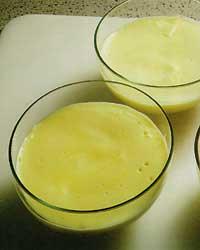Mineral salts: base of body structure
Mineral salts in the organism can be in the form of ions or forming organic molecules, such as carbohydrates, proteins or fat lipids. The most important mineral salts are analyzed below:
Calcium and phosphorus
They are the most abundant mineral salts in our body, between the kilo and the kilo and a half of each; 99% is in bones and the rest is distributed in blood and other cells.

Taking 2–3 dairy per day, we can reach 800 mg. Some fish, especially seafood, legumes and green leaf vegetables, also have a little calcium. Unlike calcium, very widespread in nature, the lack of phosphorus in the organism is very difficult. Calcium, on the contrary, we suffer more and the example is osteoporosis.
Magnesium Magnesium
It is mainly in bones, muscles, and blood. Its main function is bone structuring, but also in the production of energy and in the formation of proteins.
In adult men it is recommended 350 mg/day and in women 280 mg/day. The main sources are green vegetables: chard, spinach, borage, broccoli, artichoke, etc. Nuts, legumes, cereals, and cocoa are also rich in magnesium.
Iron Iron
Most of the iron is found in the hemoglobin (red blood cells) and the rest in the liver and spinal cord.
Hemoglobin carries oxygen from the lungs to the cells and is also a deposit of oxygen in the muscles.

Iron is found in foods of two forms: heme (especially in animal products, except milk); and not heme, which appears in vegetable foods: legumes, green vegetables, whole grains… To facilitate the absorption of this non-heme iron, it is necessary to take the fruits rich in vitamin C: orange, strawberry, kiwi, etc.
Fluoros Fluoros
It has a bone and dental structuring function with calcium and protects us from the action of cavities. It takes 1,6-4 mg/day and can be obtained from different sources. Soil and water directly influence the amount of fluoros that contain food, since if the earth is rich in fluorine, it will also be the vegetables that grow in it.
Zinc Zinc Zinc Zinc
It extends throughout the body, but especially in red blood cells, eyes, and liver. Zinc participates in the formation of proteins and in the use of vitamin A.
Adults need between 12 and 15 mg/day, if they take protein-rich foods (meat, fish, legumes, etc. ). ), these needs are met.
Iodine iodine

An adult should take 150 mg/day.
Due to the abundance of iodine in marine waters, fish have a high iodine content. In the case of vegetables, as with the moat, it depends on the amount of iodine that the earth has.
In areas far from the sea, the shortage of iodine causes the appearance of an endemic goiter. The most remarkable feature is the increase of the hill area, to avoid such situations it is advisable to take salt enriched in iodine.
Since the remaining mineral salts are found in most foods, the introduction of all kinds of foods in the diet does not pose a risk of shortages.





